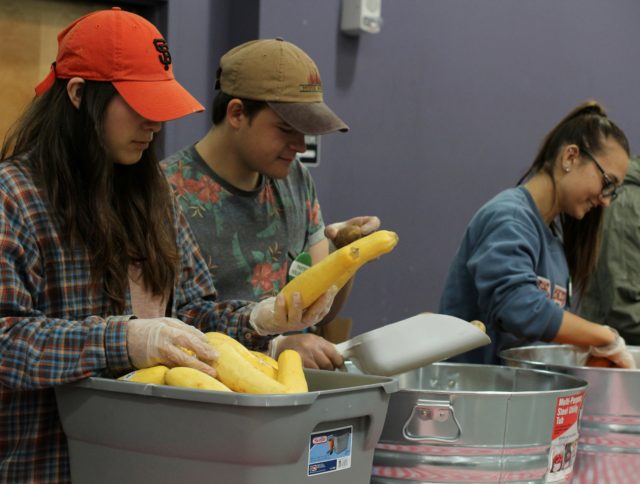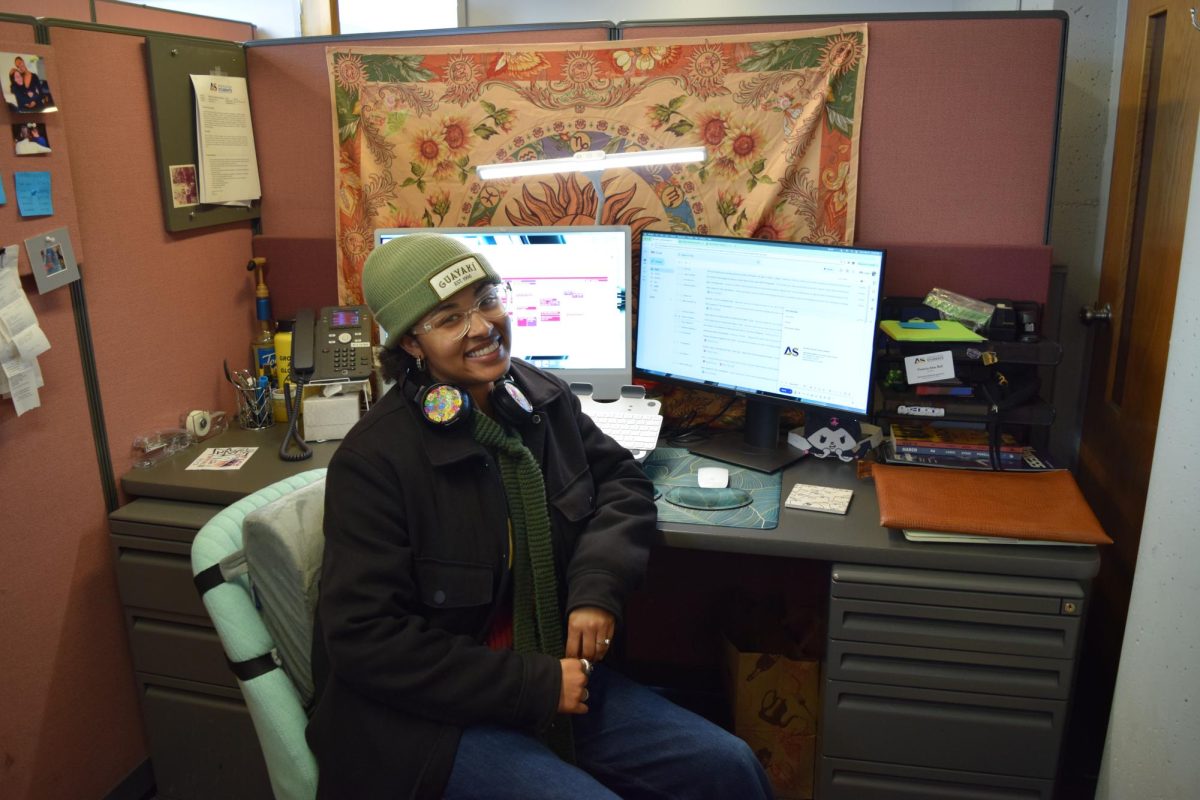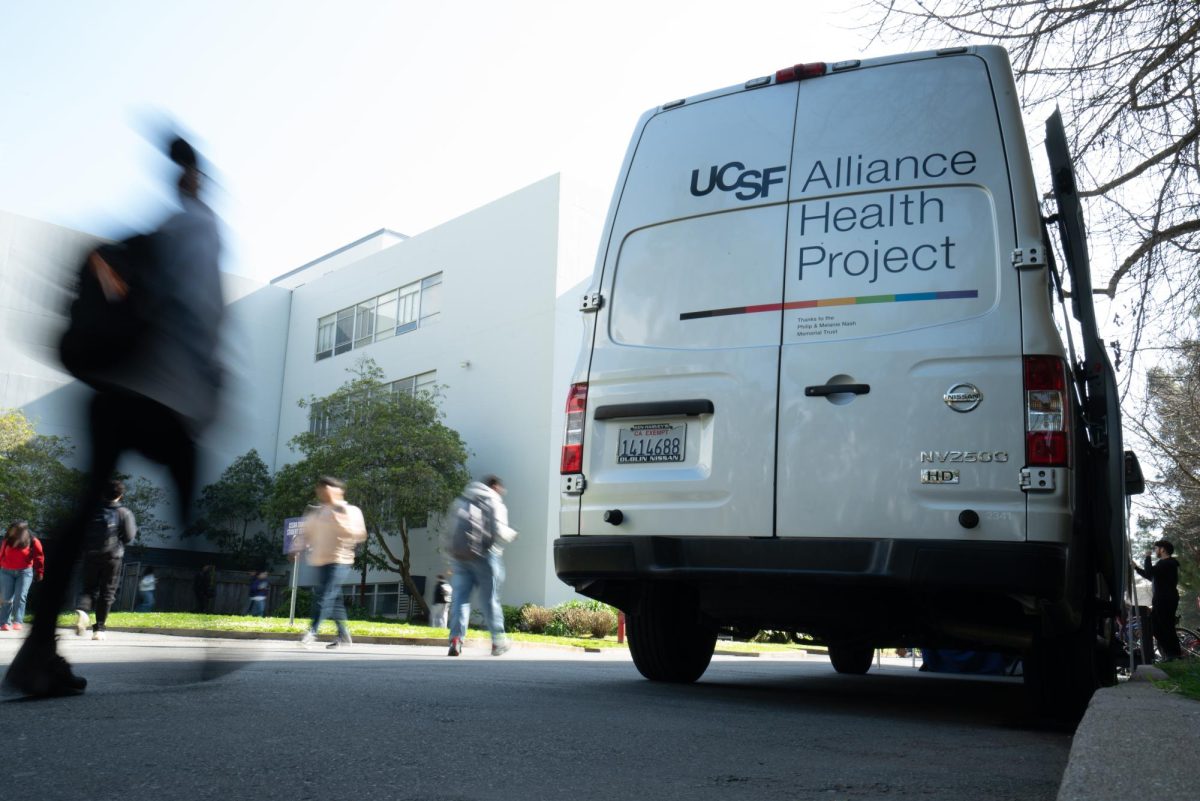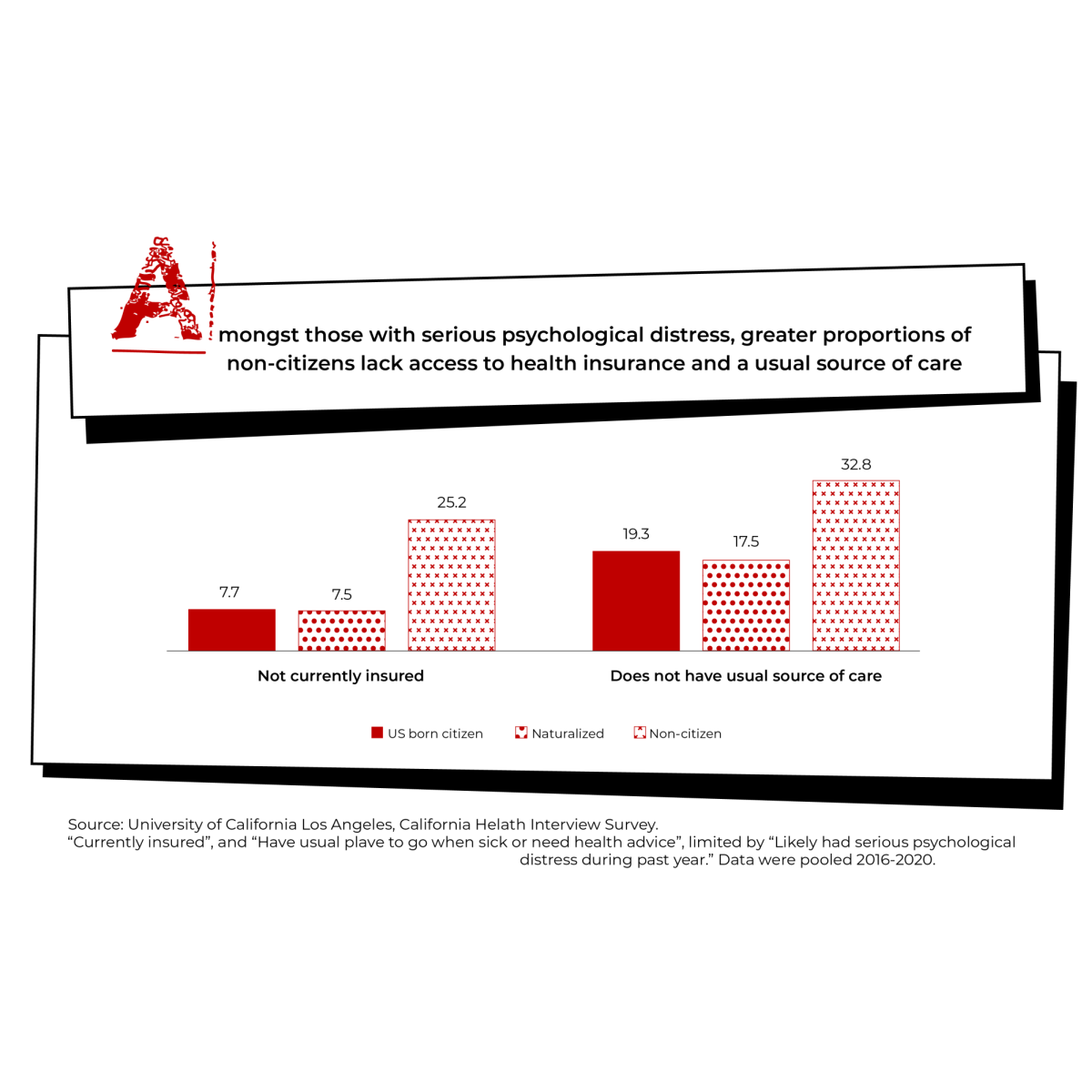“Hey guys, should I go broke and buy food? Or should I go hungry during class?” Someone behind me proposed.
No answer. Just footsteps beside him as they exited the Humanities Building.
“GUYS. Should I buy food or go hungry?” he demanded. After a couple of moments he grumbled to himself, and parted from the group.
I understood this student’s “hangry” frustrations. I wake up and scramble to get to class on an empty tank. As the day goes on, I regret not packing that banana with me to have it as “lunch.” Though I do have some money to spend on food at the student store, I often experience buyer’s remorse for spending more than three dollars on a package of Pop-Tarts.
I am one of thousands of students in college dealing with food insecurity, in addition to trying to maintain an organized adult life. Recent studies conducted by the California State University system concludes that 41.6 percent of students in the system have reported that they are experiencing food insecurity. But it doesn’t stop there.
A closer look at this statistic reveals that this number is divided between two categories: 20 percent reported they are experiencing low food security, while the rest of the 21.6 percent have reported really low food security.
Food insecurity and hunger are not the same. According to the USDA, low food insecurity is described as “reports of reduced quality, variety, or desirability of diet. Little or no indication of reduced food intake.”
So schools are just starting to figure out we are all starving and we suck at eating healthy. What else is new.
Upon transferring to San Francisco State University from a small cozy town, I realized how much I took food for granted. I never noticed how much my parents shelled out to buy food for my family.
The first time I went to the grocery store, I was stoked. I went down the shiny aisles at Costco, filling my cart with whatever my heart desired, as well as eggs and orange juice to make an effort to stay healthy. But as I saw the items add to the total during checkout, I felt my wallet shrink with each scanned item.
Shit. Not only was I tight on cash afterwards, but at this rate I would have to figure out how to eat less to make ends meet.
Some of us have heard the phrase “Freshman 15,” meaning gaining fifteen or more pounds as a common result of going away to college during the first year. However, this isn’t about getting fat. The bigger picture is poor nutrition amongst the student population.
Rather than having Mom’s hearty home cooked meals to satisfy that pang during dinner time, it is usually suppressed with something small grabbed on the way to class or something cheap.
“So- I see a lot of Starbucks,” reported Wanda Siu-Chan, Dietetic Internship director and lecturer at SF State. She states that there is little nutritional value in drinks like boba or coffee, so allocating that money towards something more wholesome like soup, will give you much more energy than a temporary caffeine high. “I hope that people are eating rather than just drinking their lunch.”
In LA, I never spent much more than five dollars buying street food. With meals costing an average between eight and sixteen dollars in San Francisco, it makes spending four dollars on a bag of chips worth putting off my hunger that way instead of “treating myself” to a meal out in the city.
Skipping meals seems harmless at first, but this habit can have long term effects besides lack of energy or not being able to focus in class.
“We [dietitians] see some of the obesity- hunger paradox, where people are maybe eating enough calories or excess calories but not the nutritious ones.” Wanda explained. She pointed out that student stores have a variety of sugary and salty snacks that are full of empty calories that can contribute to weight gain. “So over the long term, those [eating habits] can increase risk of chronic diseases like diabetes and heart disease.”
The picture of malnutrition varies, just as eating habits vary. “Alot times when we think of malnutrition, we think ‘underweight and very thin’,” Wanda commented. “But malnutrition just means ‘poor nutrition’. You can be over nourished in some ways, and under in others”
With college students reporting their current experiences with food insecurity, they are starting to become a growing “at risk” population. So how did we get here?
[ngg_images source=”galleries” container_ids=”22″ display_type=”photocrati-nextgen_basic_thumbnails” override_thumbnail_settings=”0″ thumbnail_width=”240″ thumbnail_height=”160″ thumbnail_crop=”1″ images_per_page=”20″ number_of_columns=”0″ ajax_pagination=”0″ show_all_in_lightbox=”0″ use_imagebrowser_effect=”0″ show_slideshow_link=”1″ slideshow_link_text=”[Show slideshow]” order_by=”sortorder” order_direction=”ASC” returns=”included” maximum_entity_count=”500″]
A further look into the CSU Basic Needs Initiative reported that the combined top reason why students are struggling with food is we are broke, and we do not know how to cook. Brilliant.
The 70.4 percent that fall into this category gave the following reasons for being food-insecure:
- 31.1 percent don’t have access to desirable food
- 19.2 percent were unable to prepare a well-balanced meal
- 10.2 percent forgot to eat
- 10.2 percent were dieting
As much as I needed to eat, I hated going to the grocery store. Since I was getting accustomed to the city life, I wasn’t working, and so I pulled twenty dollars here and there to pay for the basic fridge staples.
Whenever I spoke on the phone with my mom, I avoided talking about what I ate because it was upsetting to know I was totally letting myself down. I did not think moving away would be like this. The hunger just added to the feeling of being homesick.
My mom, for as long as I can remember had always gotten up earlier than I did, and made me breakfast, had my lunch ready, and dinner on the table after a long day at school. It was not until I started trying to cook for myself that I realized how endless a mother’s love can be.
Finally, I fessed up to her that I was tired of eating the same cereal every morning, packing peanut butter and jellies, and choosing either chicken or beef to go with my rice.
“Mija, apply for food stamps,” my mom pressed. “There’s no shame in it. It’s there to help you pay for food. Your aunt has one.” She had been pushing for me to apply since I moved to San Francisco, but this was before I realized how much buying groceries would eat away at my savings. I just didn’t think I would need it.
The Human Services building in San Francisco is much like the DMV, with the exception of the metal detector. When you enter you grab a number, sit with a bunch of annoyed people, and wait until your number is called.
The first time I went, I had to gather documents I never heard of before, which made me nervous. Once I sat with my caseworker, fortunately I was eligible except for one little thing. I was not working the minimum of twenty hours a week or part of the work-study program on campus.
What the fuck.
My heart sank. How was I supposed to find a job right now or figure out if I can be a work-study student?
I thanked the case worker, and left the beige building defeated. When I called my mom and told her I was rejected, there was nothing she could say because, she didn’t know what to do from there. I was on my own to figure this out.
I took in the big skyscrapers around me and could not help but feel so small. My health was a bigger concern, so there was no way in hell I was going to keep paying for my food. I was simply a few hoops away from getting what I needed to become eligible.
After a series of emails with student services on campus and submitting more paperwork, I was given the thumbs up for work-study. Within that same week, I was practically skipping down to the Human Services building assured that would be the day I would get approved.
To my surprise, I received not actual stamps, but a plastic card that looked like an ordinary debit card that I could spend at places where it was accepted. So I was not limited to grocery stores like Safeway but, I could go to Costco again with some piece of mind that my wallet would suffer no more.
Studies show that less than half of CSU students are eligible to receive food stamps after factoring in dependency status, household data, federal work rule, and exemptions. Although there is a small number of students that qualify, 39.5 percent have never heard of this service, while 19.6 percent were convinced that it did not apply to them.
Max Schroder, President of the Student Dietetic Association at SF State took it upon herself last semester to help students apply for CalFresh, a federal program formerly known as “food stamps” that helps people with paying for groceries.
“I would actually do the application for them,” Max informed. By taking students information over the phone, the process of applying was reduced to just waiting on a phone call. “Just that extra push of having someone do it for you is signing a lot more students up.”
The service has changed since then and people can no longer directly call and help students on campus. So students must find out on their own time, if they are eligible.
Unbeknownst to a lot of students, there are other ways to receive help with buying groceries. Reports from the CSU system state that about half of the students either did not know that their campus had a food pantry or that information was not offered.
“Students were the ones to figure out they were hungry, not the school system.” commented Horace Montgomery, the programs and services director of Associated Students Inc. at SF State.
Every Monday about two thousand pounds of fresh fruit, vegetables, and other random goodies like cracker jacks or waffle cones are delivered to SF State’s Pop-Up Food Pantry by the SF Marin Food Bank.
Food pantries are a relatively new thing, however Associated Students members had their student body in mind when it came to health. “What do you call food insecurity at the time? They just want to be able to help their students” Horace answered.
Before the food pantry, there was the beginning of the AS all-organic farmers market established twelve years ago by Jeremy Nicoloff, a graduate representative on the board of AS. “He was hell-bent on nutrition and the importance of how we were able to eat and that affects how we learn,” Horace recalled.
Jeremy had gone out of his way to purchase a license to operate a farmer’s market on campus, as well as make it all organic.
“That was the first time that AS noticed that food was important to the education of this campus,” Horace added.
The idea of a pantry was introduced by Associated Student President, Phoebe Dye back in 2016, and the goal was to give students in need accessibility to fresh food. Once they partnered up with the local food bank they were able to launch in spring of 2017. Now having just completed a year of servicing students in February, their numbers have gone from 50 students to over 200 being served about twenty pounds of food.
Although students come and leave, there is a lot more going on behind the scenes that is incorporated into making this program successful.
“How do we figure out what need is?” questioned Horace. With some planning, a survey was created that is filled out when people sign up to self-report their needs.
Kevin Tan, a twenty-year-old biochemistry and Chinese double major, had just started using the food pantry this semester. With fruits and vegetables being so expensive, this service has made an impact on his savings as well as his overall eating habits.
“Before the food pantry I used to skip out on breakfast,” said Tan. “Right now the food pantry gives out some really neat snacks where I can actually eat some right before class starts.”
For Horace, fighting food insecurity through providing is only the beginning of the battle against hunger. “It’s a real thing,” Horace concurred. “It’s going to take a long-term effort, and a multi-pronged effort. The food pantry to me is just one way”
He believes that it is not enough to simply provide the food, because some students don’t know how to cook.
“I think we are only doing half of it,” admitted Horace. “Providing you all this stuff, but if you don’t know how to cook a damn Brussel sprout then who cares how nutritious it is, you didn’t get to eat it!”
We laughed at the thought of how much people struggle to cook the simplest things, but this is the reality of it.
In my short couple of years living in SF, I have seen some interesting alternatives to cooking. I thought back to my roommate who tried to cook a plain old potato by microwaving it in water, but then took it out and placed in the oven first without preheating it. She waited about an hour before it was done cooking.
And then there was my roommate a year and a half ago who got too lazy to cook what she had in the fridge–that is if you consider heating frozen food “cooking”—and decided to eat a whole bag of cuties for dinner.
Good lord, do we need knowledge more than ever.
Food pantry volunteer, and a member of Student Dietetic Association, Rebbeca Wan helps students get creative with the choices they’re given at the pantry.
“I share recipes on how to cook these items, and not just using one item per dish,” she mentioned. “Kind of variate it to not just make it lunch everyday, but you can make it for breakfast, lunch, and dinner.”
The conclusive page of the CSU Basic Need Initiatives carries a list of what needs to be done in order to improve the current hunger situation on campus. One big point is to basically utilize our on-campus resources more until they come up with a long-term solution.
Well, thanks for shining the light on the obvious for fifty-three pages in a row.
The bottom line is that getting food is not enough, spreading knowledge of how we can eat, and eat better, is one of the few ways to fight off hunger, and conversely food waste.
“We have gone and said ‘hey providing this fresh stuff for you. This is important to eat this fresh stuff—but you don’t know how to prepare it.” acknowledged Horace. “We need to find ways to get to their level so they understand where we’re trying to go with it.”
With the help of others actively sharing tips or helping cook we can prevent malnourishment in students and enlighten people, like my roommate, on how to properly cook a potato.





![[From left to right] Joseph Escobedo, Mariana Del Toro, Oliver Elias Tinoco and Rogelio Cruz, Latinx Queer Club officers, introduce themselves to members in the meeting room on the second floor of the Cesar Chavez Student Center.](https://xpressmagazine.org/wp-content/uploads/2024/03/mag_theirown_DH_014-1200x800.jpg)

